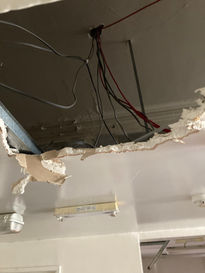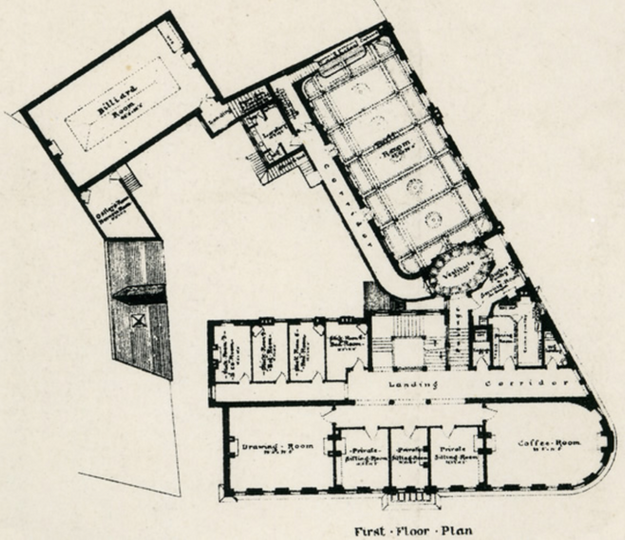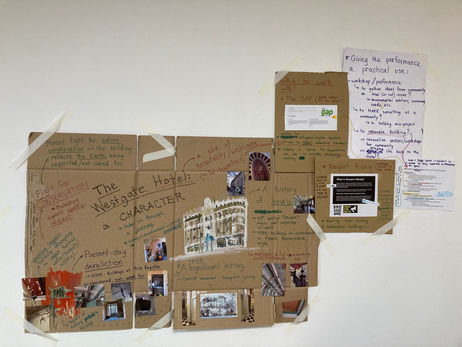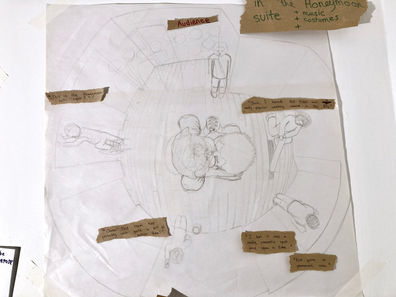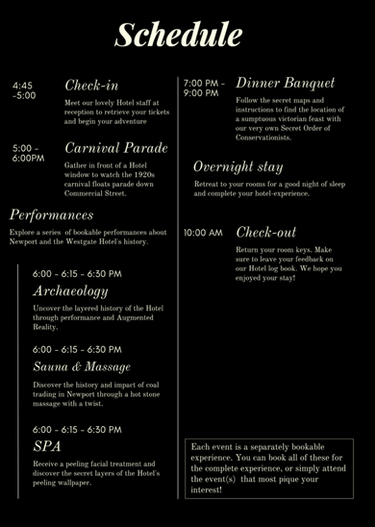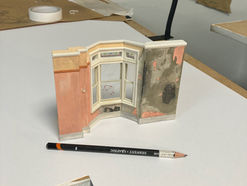top of page

The Conservationists' Hotel
Set and Costume Design (Conceptual)
Devised in collaboration with Bridget Keehan
Site-Specific Theatre: The Westgate Hotel, Newport
A RWCMD Project (2021)
Director: Bridget Keehan | Supervisor: Lucy Hall
R&D Design Project for the RWCMD
.png)
Through the magic of conservation, the past lives of the once-luxurious Westgate Hotel come back to life. From 19th century secret guilds to frizz-filled 80s spin classes, this performance uncovers the hidden treasures and heritage buried beneath the peeling wallpaper and creaky floorboards of this derelict building in the heart of Newport.
Audience members become Hotel guests, journeying through the space through a series of bookable experiences and events that follow the structure of a classic Hotel experience.
Final Moment Drawings:

The moment drawings were created on Photoshop to illustrate each scene within photographs of the real space.
Bright colours and ambient lighting are used to create highly stylised and atmospheric spaces, which form the backdrop for the performance of acts of physical, cultural, environmental and historical conservation.
Each act is heightened and ritualistic, reclaiming these abandoned rooms as significant cultural and historical sites that must be honoured and preserved.
Physical Model
A woman in a top floor room observing the Carnival Parade passing in front of the Hotel.







Scroll down for an overview my process
Research & Design Process:
Location Research: Contrast between luxurious and ornate architecture and dereliction.
Research: Deep dive into local archives about the Hotel's past
Concept Development & Process:
-
Looking at the Hotel as a character. How does it come to life? How would it tell its story?
-
Ghosts of the Hotel's past: giving each story a face
-
Using the deterioration of the space as an indicator of its history, ie. peeling paint revealing original wallpaper underneath, visible old floorboards, etc.
-
-
Looking at the stories on different scales:
-
Large scale historical events, ie. Chartist Uprising
-
Community events, ie. Aerobics classes
-
Individual anecdotes, ie. kids breaking in to the hotel to have parties
-
-
==> Treating them with the same importance
-
Researching different types of conservation (restoration, environmental conservation, archiving, community re-building,...) and which ones are relevant to the local area
bottom of page

















